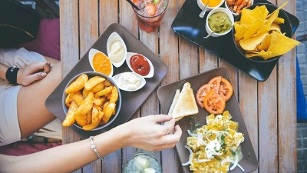
Is weight loss water therapy right for you? What are the requirements of the Japanese diet: menu and food options. What result is worth waiting for?
Water-based weight loss therapy originated in Japan and has become very popular around the world in recent years. It’s called the Japanese diet, although it’s more of a hydration regimen than a meal plan. By observing it, you can achieve good hydration of the body and get rid of extra pounds.
Principles of the Japanese diet
The advantage of the nutrition system is that you do not need to adjust your diet and give up your favorite foods.
But several conditions must be met:
Start the day with water.Drink four to five glasses of room temperature water on an empty stomach each morning. Too much? It really is. But this is the essence of water therapy. The body must receive as much water as possible. If it is difficult to start with such a "dose", approach it gradually. Initially let it be one or two glasses. Within a few weeks, bring the amount of fluid consumed in the morning to the recommended speed.
Drink "thirsty" during the day.The amount of fluid you drink during the day is not regulated. You can drink as much as you want. Listen to your feelings. Often the body masks the need for water under the feeling of hunger.
Reduce food intake to 15 minutes.The time interval during which you can eat is 15 minutes. That being said, the Japanese diet does not dictate what you should eat. In theory, you can eat anything. A 15-minute window will prevent you from eating too much or overeating.
Eat no more than two hours later.The number of meals per day is also limited. But the next meeting should take place no earlier than two hours after the previous one.

Drinking enough water cleanses the digestive system, improves intestinal health and prevents constipation. The liquid makes the stomach feel full and reduces the desire for food.
There are research data showing that overweight people who drank 500 ml of water 30 minutes before meals ate 13% less food. And this has helped them lose weight in the long run.
According to scientific evidence, drinking water increases your energy expenditure at rest. This means that even with daily activities you will burn more calories than before. Increasing energy consumption while reducing food intake will inevitably lead to weight loss.
Japanese diet: menu, effectiveness
Despite the fact that the diet does not imply restrictions in the choice of products, you must approach this issue carefully. After all, it is the excess calories in the diet that often become the cause of weight gain.
Avoid sources of "empty calories": sugar, desserts, bakery products, regular pasta, polished rice. Replace them with sources of long carbohydrates: whole grains, whole grain bread. Include more protein foods in your diet: meat, fish, dairy products, legumes. Don't forget fruits and vegetables: vegetables should be used in every meal. Replace desserts with fruit.
Switching to a new diet will allow you to safely lose weight (within four pounds a month). Slow weight loss does not burden the body. And it helps maintain the achieved result, in reducing the weight to normal.
Adequate physical activity helps to improve and accelerate results: running, walking, swimming, fitness. Any type of physical activity you enjoy will help you lose weight.
Advantages and contraindications of the Japanese diet
Proponents of the diet argue that this meal plan is not just about losing weight. But also:
- improves brain function;
- gives energy and energy;
- helps control blood pressure;
- prevents headaches.
These effects are the logical result of normal body hydration. And if you haven't drunk enough water during the day, you'll really feel better.
But it’s important to keep in mind that each person’s fluid needs are different. It depends on body weight, physical activity. Excess water is no less dangerous than lack. It can cause a critical drop in sodium levels in the blood. And lead to hyponatremia - a condition in which the symptoms characteristic of poisoning occur: vomiting, nausea, loss of consciousness.
While drinking four to five glasses of water in one go is unlikely to cause hyponatremia, you should be careful with your body. And do not force the liquid into yourself.
People with impaired kidney function should not take the risk and start water therapy without consulting a doctor. And if you feel uncomfortable during your Japanese diet, you need to reduce your water intake.































